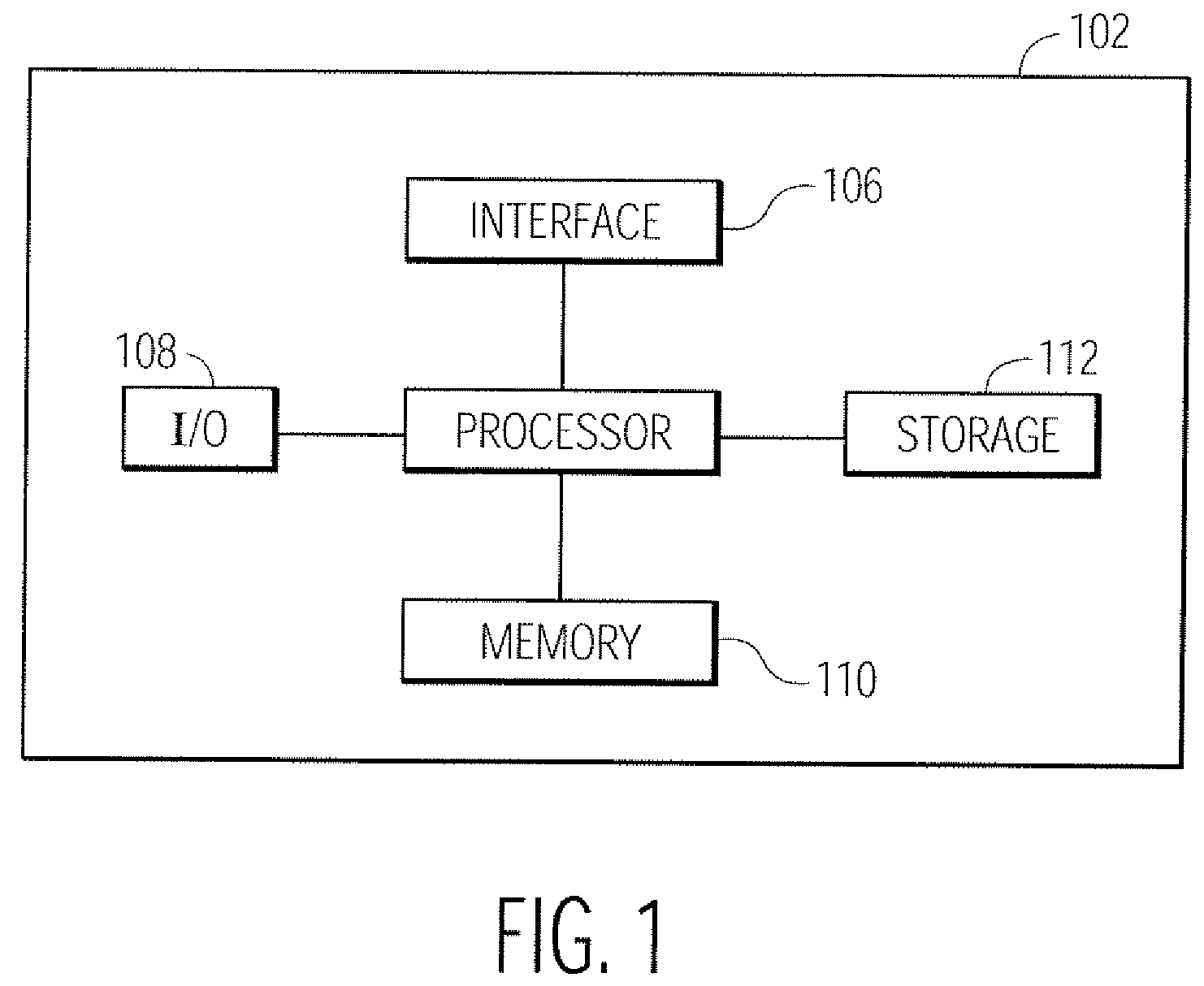Method and apparatus for classifying tissue using image data
a tissue and image data technology, applied in the field of tissue classification, can solve the problems of only one parameter examination at a time, non-invasive magnetic resonance imaging (mri), and unsuitable detection of lymph node metastases
- Summary
- Abstract
- Description
- Claims
- Application Information
AI Technical Summary
Benefits of technology
Problems solved by technology
Method used
Image
Examples
Embodiment Construction
[0029]The processing steps described herein may be performed by an appropriately programmed computer, the configuration of which is well known in the art. An appropriate computer may be implemented, for example, using well known computer processors, memory units, storage devices, computer software, and other components. A high level block diagram of such a computer is shown in FIG. 1. Computer 102 contains a processor 104 which controls the overall operation of computer 102 by executing computer program instructions which define such operation. The computer program instructions may be stored in a storage device 112 (e.g., magnetic disk, optical disk, or any other computer readable medium) and loaded into memory 110 when execution of the computer program instructions is desired. Memory 110 may also be used to store data used during the various steps of the method. Computer 102 also includes one or more interfaces 106 for communicating with other devices (e.g., locally or via a networ...
PUM
 Login to View More
Login to View More Abstract
Description
Claims
Application Information
 Login to View More
Login to View More - R&D
- Intellectual Property
- Life Sciences
- Materials
- Tech Scout
- Unparalleled Data Quality
- Higher Quality Content
- 60% Fewer Hallucinations
Browse by: Latest US Patents, China's latest patents, Technical Efficacy Thesaurus, Application Domain, Technology Topic, Popular Technical Reports.
© 2025 PatSnap. All rights reserved.Legal|Privacy policy|Modern Slavery Act Transparency Statement|Sitemap|About US| Contact US: help@patsnap.com



